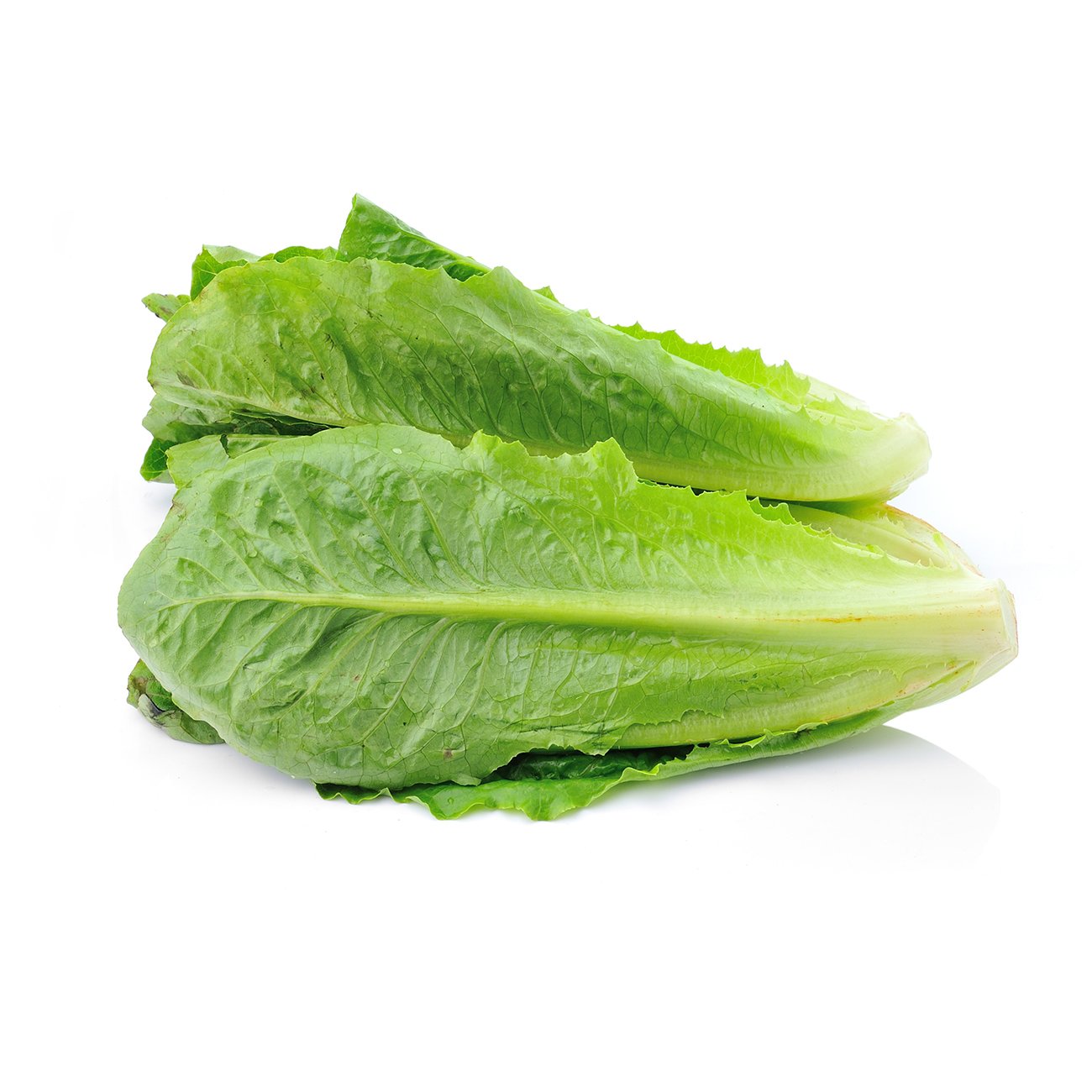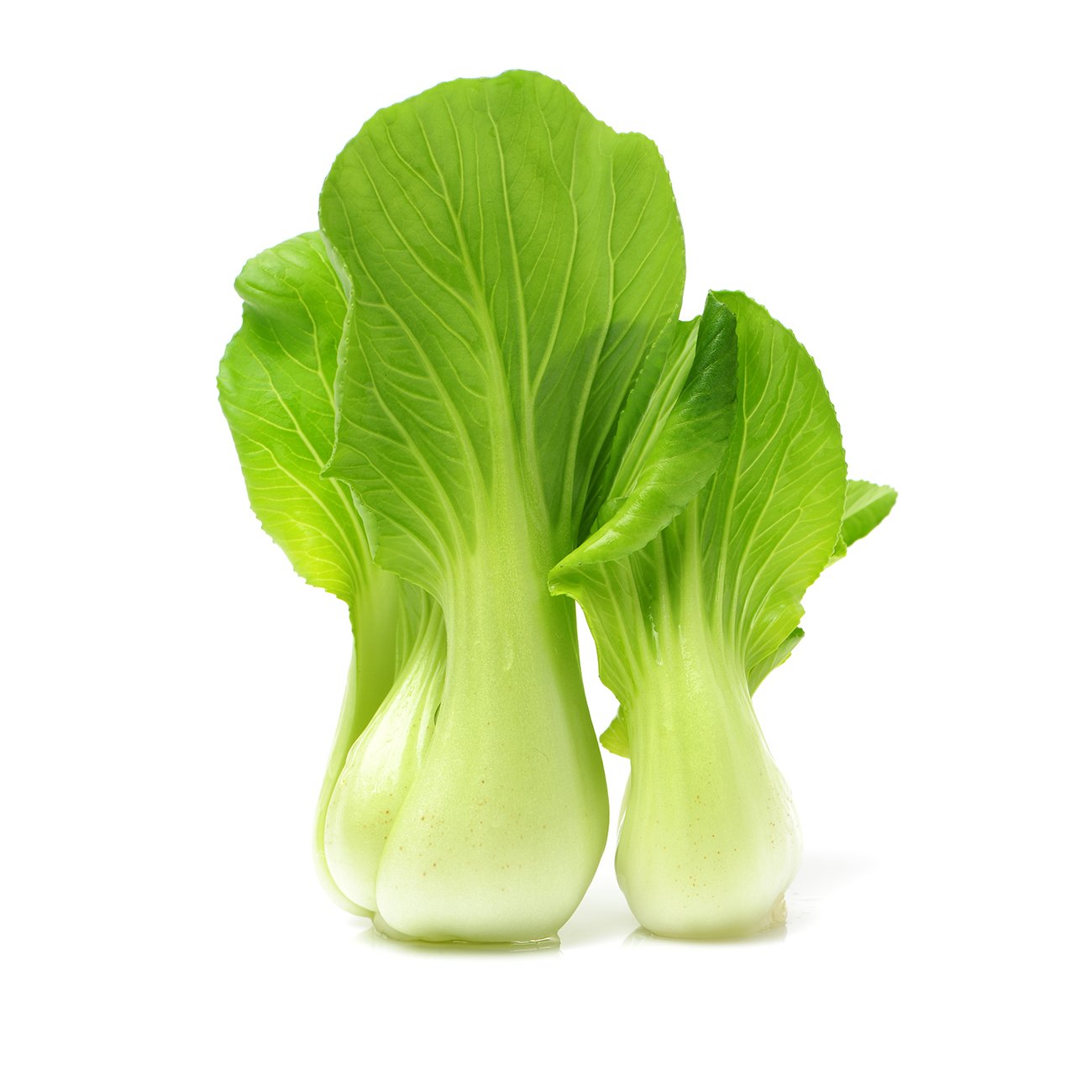Lettuce, cos
Crisp in texture with a bitter herb taste.
Alternative Name
Romaine
Scientific Name
Lactuca sativa
Health benefits
Bones & joints Brain & nervous system Heart Immune system Skin
Cos is an old-fashioned winter lettuce that is also known as romaine. It has green, crisp, extended leaves, tightly wrapped to form an elongated head. The coarse leaves are crunchy and sharp in flavour. Both full sized and smaller 'baby' cos lettuces are available. The crispness of cos lends the leaves to being used as an edible scoop for dips or as a base/plate for salads.
-
Harvesting
Maturity is based on the number of leaves and head development. A very loose or easily compressible head is immature and a very firm or hard head is overmature. Heads that are immature (<30 leaves before trimming) and mature (about 35 leaves) have much better flavour than overmature heads and also have fewer postharvest problems. Extra trimming to leave only the inner, most tender light green leaves results in 'romaine hearts'. After trimming outer leaves, the leaves should be a bright to dark green colour with the inner leaves of the head being yellow or light green. leaves should be crisp and turgid and free from insects, decay or mechanical damage.Postharvest storage temperature
The optimum storage is 0°C. A shelf life of 21–28 days can be expected at this temperature and >95% relative humidity. Storage of overmature heads at high temperatures increases pink rib disorder. Freeze damage can occur in the field and cause separation of the epidermis from the leaf, weakening the leaf and causing more rapid bacterial decay. During storage, freeze damage can occur if the lettuce is stored at <-0.2°C. this appears as darkened translucent or water-soaked areas that will turn slimy and deteriorate rapidly after thawing.Controlled atmosphere storage
Some benefit to shelf life can be obtained with low O2 atmospheres (1–3%) at temperatures of 0–5°C. Low O2 atmospheres will reduce respiration rates and reduce the detrimental effects of ethylene. Intact heads are not generally benefited by atmospheres containing CO2 and injury may occur with >5% CO2 (brown stain). Cut cos lettuce, is commonly packaged in low O2 (<1%) and high CO2 (7-10%) atmospheres because these conditions control browning on the cut surfaces. On salad pieces, cut surface browning occurs more rapidly and more extensively than do symptoms of brown stain caused by CO2. Cut iceberg lettuce tolerates higher CO2 concentrations than cut cos lettuce.Ethylene sensitivity
Cos lettuce is sensitive to ethylene, with damage appearing as discoloured spots on the midrib. These are generally larger and less defined than those found with ethylene-induced russet spotting on iceberg lettuce. Varieties can vary significantly in their susceptibility to ethylene.Humidity storage
Store at >95% relative humidity.Disease & infection
Bacterial soft rots are caused by numerous bacteria species and result in a slimy breakdown of the infected tissue. Trimming outer leaves, rapid cooling and low temperature storage reduce development of bacterial soft rots. Breakage of the midribs often occurs during field packing and causes increased susceptibility to decay. Fungal pathogens may also lead to a watery breakdown of lettuce but are distinguished from bacterial soft rots by the development of black and grey spores. Trimming and low temperatures also reduce the severity of these rots. -
Remove outer before use. Keep in vegetable drawer of fridge.
Nutrition information
| Qty per serve | % RDI per serve | Qty per 100g | |
|---|---|---|---|
| Energy | 40 kJ | 0% | 80 kJ |
| Protein | 0.7 g | 1% | 1.4 g |
| Fat, total | 0.2 g | 0% | 0.3 g |
| – saturated | 0.1 g | 0% | 0.1 g |
| Carbohydrate | 0.9 g | 0% | 1.8 g |
| – sugars | 0.9 g | 1% | 1.8 g |
| Dietary fibre, total | 0.9 g | 3% | 1.8 g |
| Sodium | 9 mg | 0% | 18 mg |
| Folate | 29 µg | 14% RDI | 57 µg |
| Vitamin A | 102 µg | 14% RDI | 204 µg |
| Vitamin C | 7 mg | 16% RDI | 13 mg |
| Vitamin K | 51 mg | 64% RDI | 103 mg |
Note: % RDI are based on an average adult diet of 8700 kJ. Your daily intakes may be higher or lower depending on your energy needs. RDI = Recommended Dietary Intake; ESADDI = Estimated Safe and Adequate Daily Dietary Intake.

You might also like
Veggy tip
The obvious choice for cos is in Caesar salads but the crisp leaves make it great for dipping or loading with egg or tuna salads. You can also dress it simply with olive oil and lemon juice.


